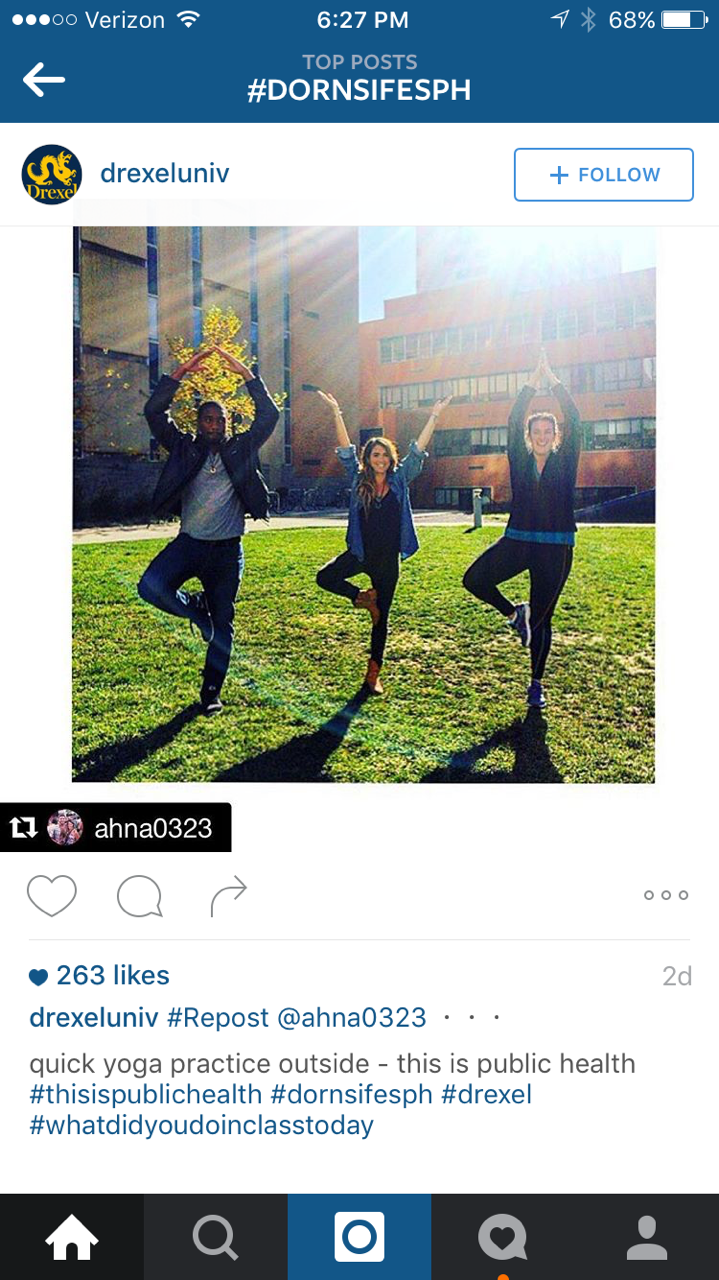MPH Students Spread Powerful Health Messages Through Social Media Exercise
December 3, 2015
Social media is everywhere; multiple platforms have become a relevant and integral part of everyday life, especially for students at the Dornsife School of Public Health.
On November 16, first-year MPH students headed outside of the classroom to apply recently learned theories and frameworks on health communication and media advocacy.
Philip Massey, PhD, MPH, assistant professor in Community Health and Prevention, lectured on health communication and media advocacy to first-year MPH students in the Prevention Principles and Practices class. Massey then instructed them to head outside of the classroom to take pictures of different public health issues in and around Drexel’s campus and post them on Instagram using hashtags like #drexel, #dornsifesph, and #thisispublichealth.

A student's picture was ranked 3rd among nearly 60,000 #Drexel Instagram posts the week it was posted. The picture, which featured three first-year MPH students striking a yoga pose, earned more than 260 likes after it was reposted by the official Drexel University Instagram account.
"There is a rich history and body of evidence using traditional media for public health communication and health promotion, and it is important for public health professionals to extend the research and methodologies to emerging media platforms, such as social media, to engage with and reach diverse audiences to promote health," said Massey. When asked about why social media is such an influential tool for public health, Massey added that it is about meeting people where they are and understanding that social media is a way to reach diverse and dynamic audiences who not just consume but also produce."
The impressive reach that resulted from the little exercise exhibited Dr. Massey's point: a seemingly small task has the power to spread valuable messages in public health and allow participation from both the curator of the message and its vast audience. This two-way productivity, ultimately, improves health communication.